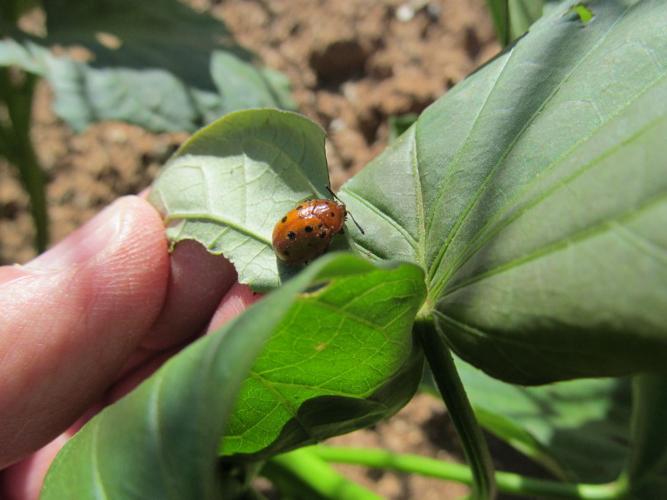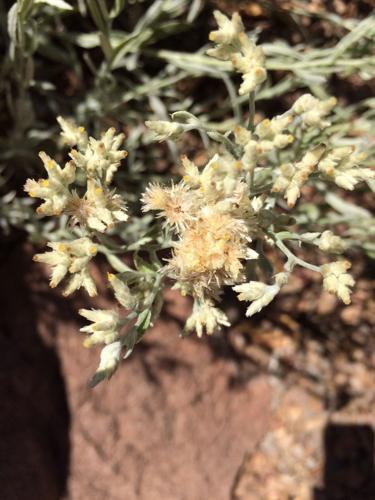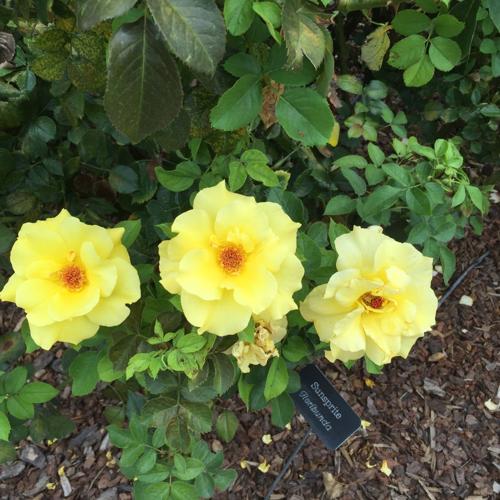Q: What is the beetle eating my sweet potato leaves?
A: This is a species of leaf beetle, Chelymorpha phytophagica, that is more specifically a tortoise beetle. They are known to feed on members of the Convolvulaceae plant family otherwise known as the morning glory family. Sweet potato is among almost 2,000 species of vines (mostly), trees, shrubs, and herbs. Other family members include notorious weeds (bindweed and dodder) and these insects may use these as alternate host plants.
The beetles can defoliate and if there is a large population, reduce the vigor of the plants. Since most plants can handle a little defoliation, it is not something to worry about if only small numbers of beetles are seen.
Q: My neighbor brought me a fibrous mass of roots, black in color, that he pulled from his sewer pipe, asking if I could identify them. The closest nearby tree and most likely culprit is a mature Chilean mesquite and 20 feet beyond that is a mature foothills palo verde. I am stumped by the black color. Is that due to the sewer? I wouldn’t expect tree roots to be naturally black. Do you think the palo verde could be the culprit?
A: The black color is likely due to the sewer and those roots may be rotten from being exposed to extreme irrigation. Normal healthy roots are whitish in color. If they are rotten, the outer layer of the roots should slide off easily if you pull on it.
As for the culprit, it could be either tree. Mature tree roots can extend two to three times the radius of the crown.
Q: I am taking care of two rose bushes and my fertilizing dates have been a month apart. That has not been a problem but now with fall coming on, my question is do I need to fertilize them another time or leave them alone? My last fertilizer dates have been June 27 for one plant and July 27 for the other one. Neither bush has been really great at producing roses this year, but I try to water them thoroughly (45 minutes) every couple days in the really hot part of the summer. Also, should I cut the plants back a lot before winter or not?
A: The answer to your first question is yes, it would be good to fertilize again now. Roses are heavy feeders that need to be supplied with nitrogen and phosphorus. It is better to apply small amounts every six weeks during the growing season beginning after you prune them in January or February and continue until June. Some like to continue fertilizing through the summer at half strength while others give their roses a break until fall. In either case, going back to regular fertilization can begin again in September and up through mid-October.
We recommend watering roses every three to five days in the summer down to 18 to 24 inches. In the spring and fall, you can back it off to every five to seven days and in the winter, every seven to 14 days. There is no need to prune now; you can take care of that in the new year.
Q: We found a strange plant in our yard — a “volunteer” — and were wondering what it is because it is crowding out something we planted.
A: This is Artemisia cana (silver sagebrush). It’s a native species in the western states and western Canada and a member of the Asteraceae or sunflower family. Some wildlife and livestock will eat it in case you are keeping sheep. Otherwise, it has nice soft silvery foliage that is a good desert adaptation and yellow flowers.






